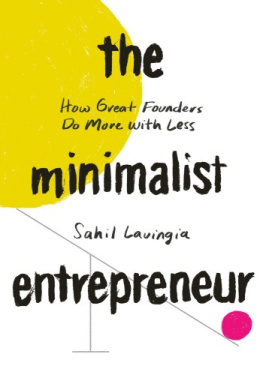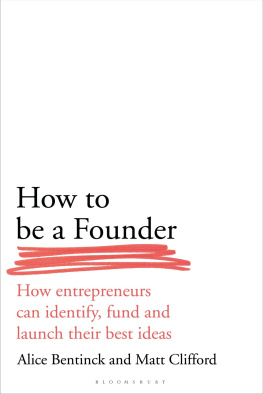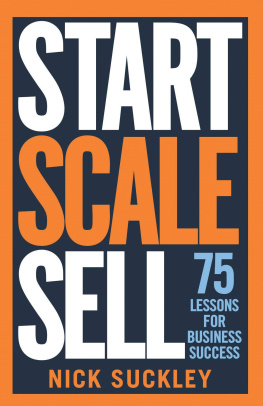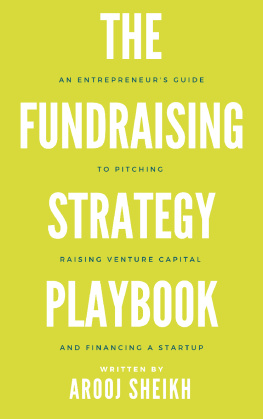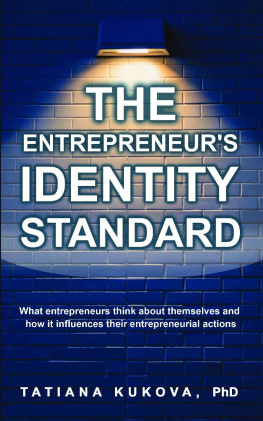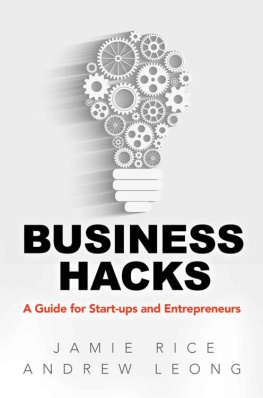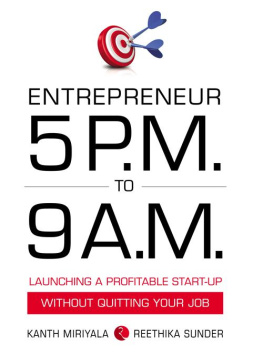Portfolio / Penguin
An imprint of Penguin Random House LLC
penguinrandomhouse.com

Copyright 2021 by Sahil Lavingia
Penguin supports copyright. Copyright fuels creativity, encourages diverse voices, promotes free speech, and creates a vibrant culture. Thank you for buying an authorized edition of this book and for complying with copyright laws by not reproducing, scanning, or distributing any part of it in any form without permission. You are supporting writers and allowing Penguin to continue to publish books for every reader.
Library of Congress Cataloging-in-Publication Data
Names: Lavingia, Sahil, author.
Title: The minimalist entrepreneur : how great founders do more with less / Sahil Lavingia.
Description: New York : Portfolio/Penguin, [2021] | Includes
bibliographical references and index.
Identifiers: LCCN 2021012336 (print) | LCCN 2021012337 (ebook) | ISBN 9780593192399 (hardcover) | ISBN 9780593192405 (ebook)
Subjects: LCSH: New business enterprises.
Classification: LCC HD62.5 .L389 2021 (print) | LCC HD62.5 (ebook) | DDC 658.1/1dc23
LC record available at https://lccn.loc.gov/2021012336
LC ebook record available at https://lccn.loc.gov/2021012337
Cpver design: Dillon Blue / Big Monocle
Interior illustrations by Brian Box Brown
Book design by Chris Welch, adapted for ebook by Cora Wigen
pid_prh_5.8.0_c0_r0
contents
INTRODUCTION
I started my career chasing unicorns. I joined Pinterest as employee number two, but in 2011, I left before my stock vested to build my own billion-dollar company.

I had spent a weekend building the prototype of Gumroad, a tool that helped creators sell their products online. No complicated setup. No elaborate storefront. Just a link for customers to pay and youre in business. More than fifty thousand people visited the site on the first day, and I was sure I was on the cusp of something big.
The first step: raising money from VCs. As a nineteen-year-old solo founder, I found myself walking up and down the mythical Sand Hill Road, sweating through my jeans, having meetings in the same rooms where the decisions to fund companies like Netflix, Apple, Amazon, Facebook, and Google had happened. I ended up raising more than $8 million in venture capital from renowned Silicon Valley investors, including Accel Partners (early investor in Facebook), Kleiner Perkins (early investor in Google, Amazon, and Apple), Max Levchin (cofounder of PayPal), Naval Ravikant (cofounder of AngelList), and Chris Sacca (early investor in Twitter, Square, and Uber). They too thought they saw a unicorn galloping in the distance.
The chase was on. In short order, I built a world-class teamrecruiting talent out of companies like Stripe, Yelp, and Amazonand together we went to work on building a world-class product. I was confident that Id soon be strolling through Allen & Companys annual Sun Valley conference, strategizing about the fight against malaria arm-in-arm with Bill Gates and Warren Buffett. I was never in it for the money, I told myself. I wanted to make an impact, but quietly. When I became a tech titan, I was going to be the kind of titan magazine profiles called down-to-earth.
I didnt make it to Sun Valley that summer. Or the summer after that. The closest I ever got to Bill Gates was watching him speak at a Kleiner Perkins CEO summit. Gumroads pitched flight into the stratosphere leveled off after we burned through about $10 million in venture capital. After nine months of trying to raise more funding, we failed. In October 2015, I laid off three-quarters of the staffincluding many good friends.
Once the bleeding stopped, it was time to reassess. Gumroad was still operational, but I felt like a complete failure. With many in my circle still focused on raising money, hiring employees, and chasing their own billion-dollar companiessome successfullyI couldnt bear to stick around Silicon Valley. For much of 2016, I kept my apartment in San Francisco but spent most of my time traveling and writing fiction, convinced that even if I couldnt hack it in Startupland, I could still build a life for myself as a digital nomad. While I was inspired by Tim Ferrisss The 4-Hour Workweek , it didnt take long to realize that operating Gumroad as a lifestyle business wasnt for me. I was still trying to figure out what came next when I saw a tweet from Brandon Sanderson, one of my favorite authors, about a science-fiction and fantasy writing class he was teaching in Provo, Utah. In January 2017, I jumped on the opportunity to save rent and save face by moving to a place where no one knew me. There, I could figure out how to regroup even as I kept Gumroad afloat.
I knew things would be very different in Provo, but the contrast still surprised me. In San Francisco, being successful means youve made a lot of money (which, in San Francisco, is a lot of money). In Utah, it means youre married and active in the church. My new Provo friends told me that Id been crazy trying to build a billion-dollar company in the first place. Why wasnt Gumroad good enough as it was? After all, I had a sustainable business serving a group of customers I loved. What more could I want?
At first, I couldnt quite grasp what they were talking about, but after living in Provo for a couple of years away from the white-hot epicenter of venture capital, I came to agree. While the unicorn I was chasing turned out to be more of a Shetland pony, my original vision was being realized. Thousands of creators were using Gumroad to build their own creative businesses. Real people in the real world were paying their mortgages or topping off their kids college funds or simply paying for a few extra lattes by selling courses, ebooks, and software online.
Over time, I realized that the problem wasnt Gumroad, the problem was me. I was still so focused on that elusive unicorn, I couldnt see the thriving business humming along right in front of me. Gumroad was profitable, the right size for its market, and enabling more and more writers, coders, crafters, and other makers to achieve their dreams with each passing day. Gumroad may have been a crappy investment for a few venture capitalists, but it was still a great company for its customers.
In the year after the layoffs, when I worked by myself, Gumroad still sent approximately $40 million to our creators, without any content marketing or paid advertising. Just creators telling other creators. When I recommitted to growing the company again in 2019, I continued to say no to those things I had said yes to previously, and focused solely on what would create more value for our creators. (Namely, shipping a better product.) It worked: In 2020 Gumroad sent more than $140 million to our creators, up 87 percent over the year before, all while remaining profitable.
Companies like mine may not grace the covers of glossy magazines or inspire Hollywood biopics, but they drive real, positive change and empower their founders, customers, and employees alike. I know that now, but it took me years to decouple my self-worth from my net worth and to realize that I hadnt failed. I had succeeded.
In February 2019, I wrote about my experience in a Medium essay, Reflecting on My Failure to Build a Billion-Dollar Company, that struck a chord with millions. Since then, Ive had the chance to connect with entrepreneurs and aspiring entrepreneurs who, deep down, would much rather build a sustainable business like Gumroad than chase a unicorn. They just think its weird and uncool to express that desire when the media and our bigger-is-better culture keeps telling them that a unicorn is the only kind of business worth creating.
Next page
